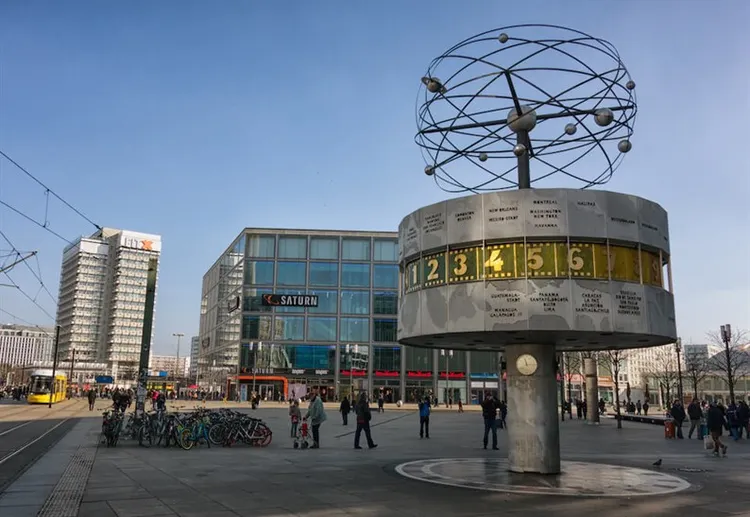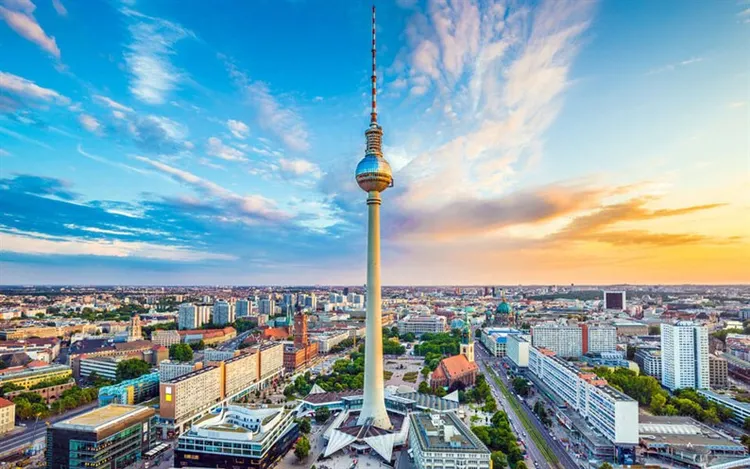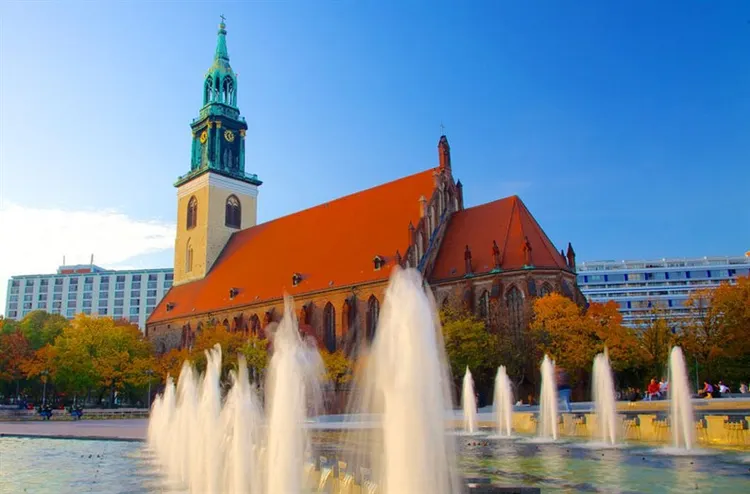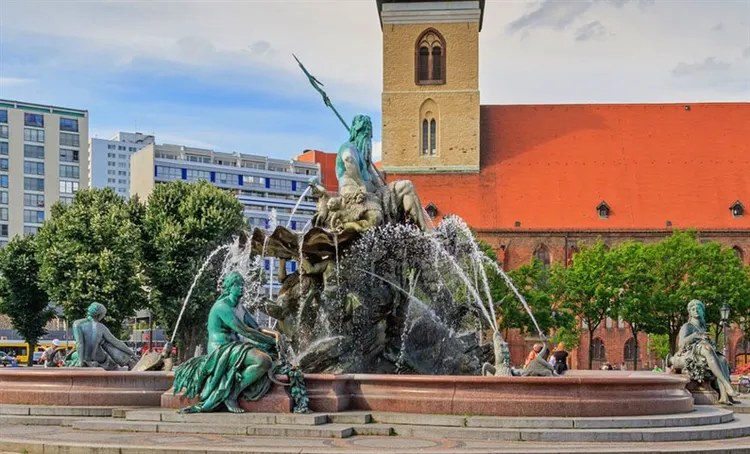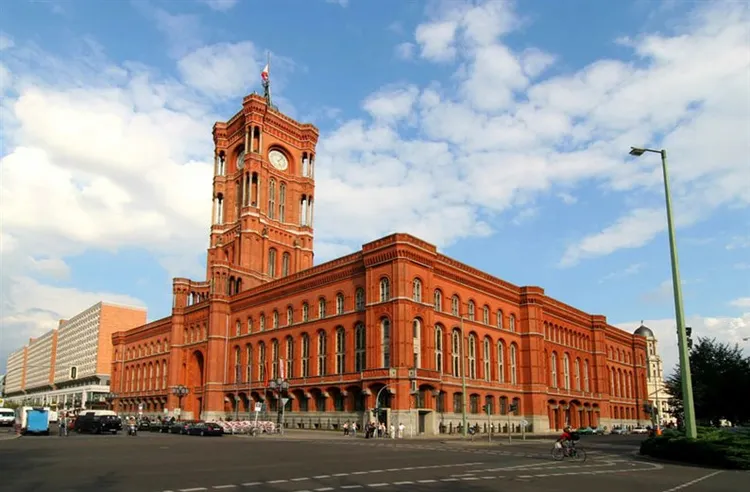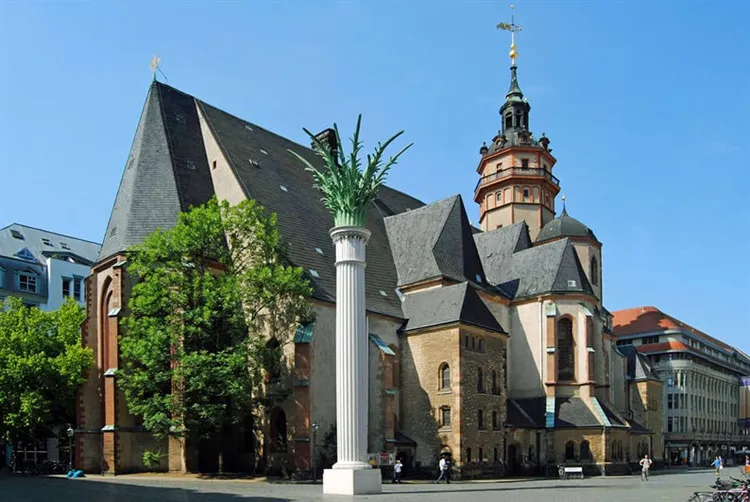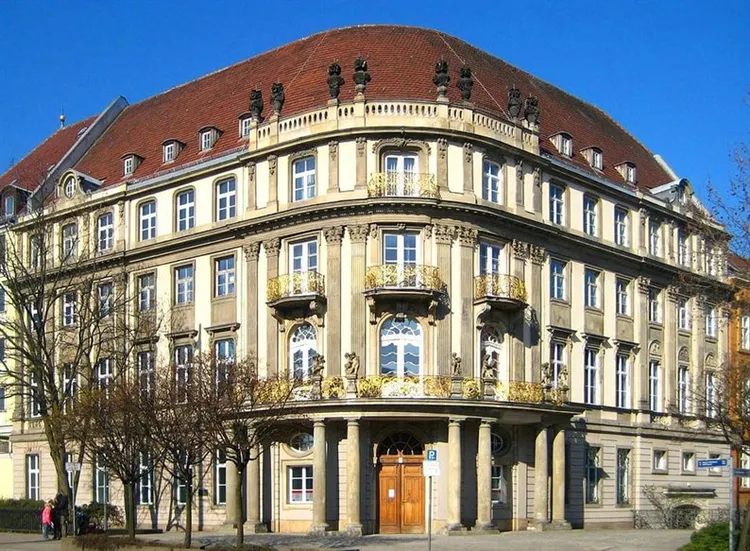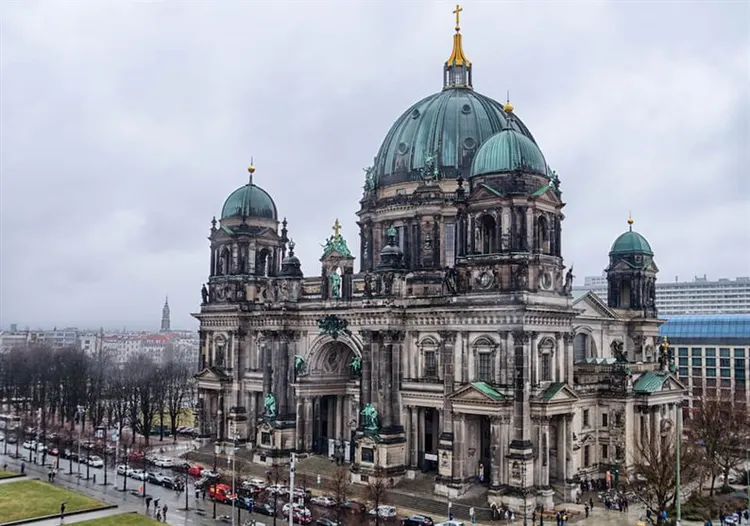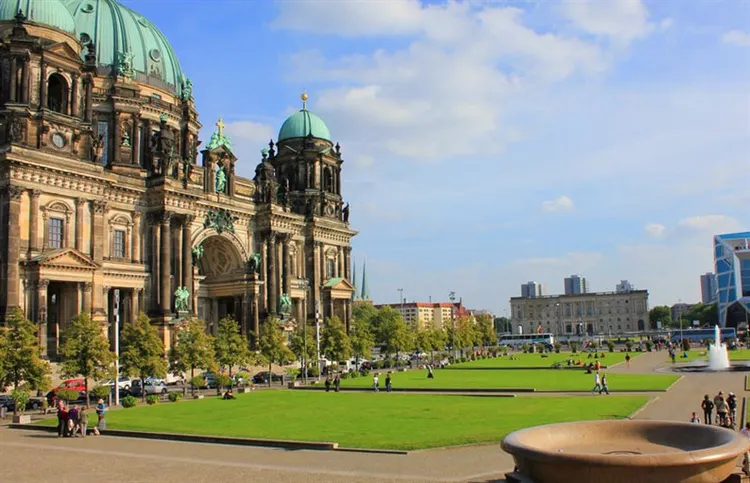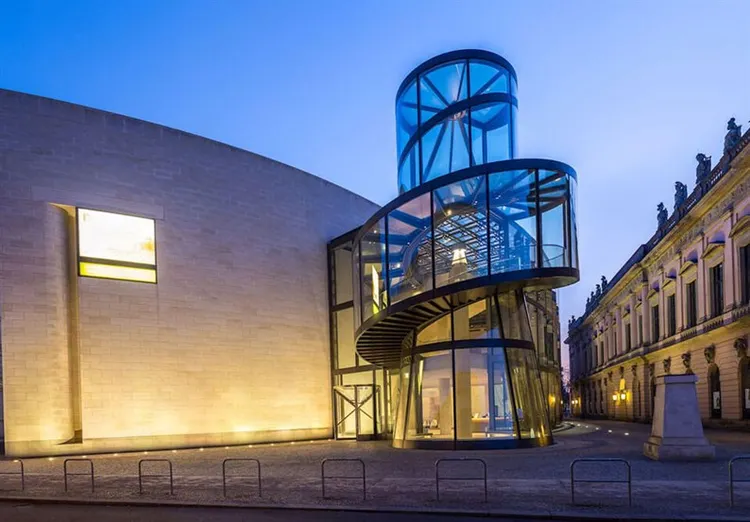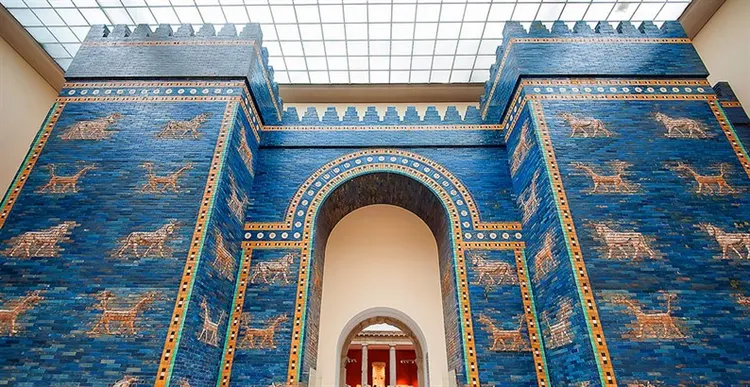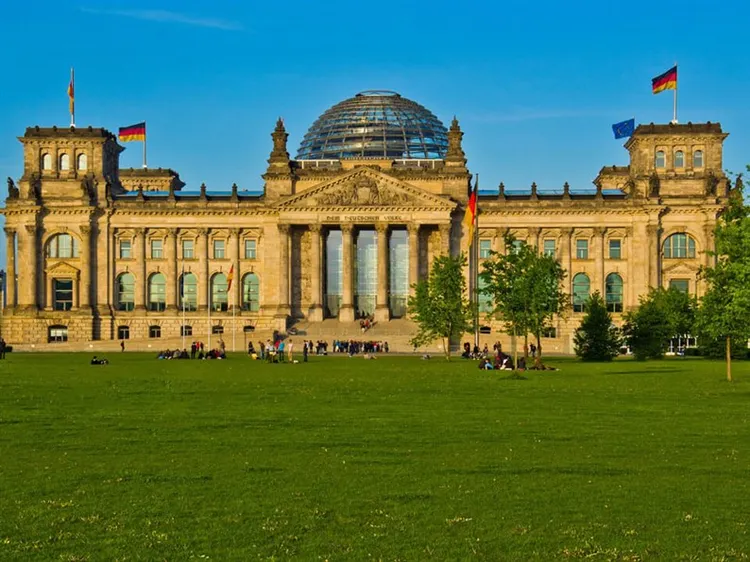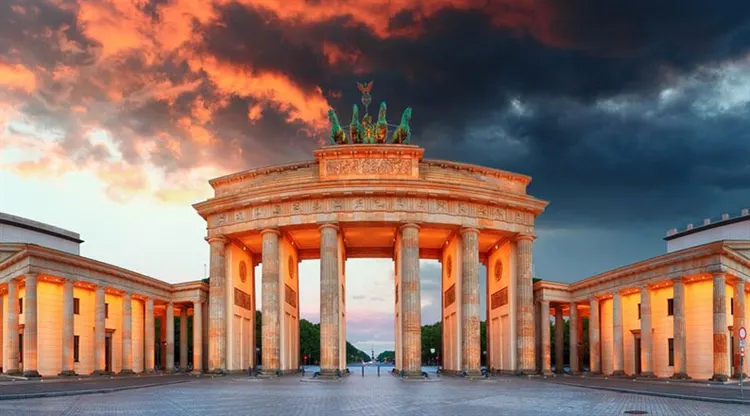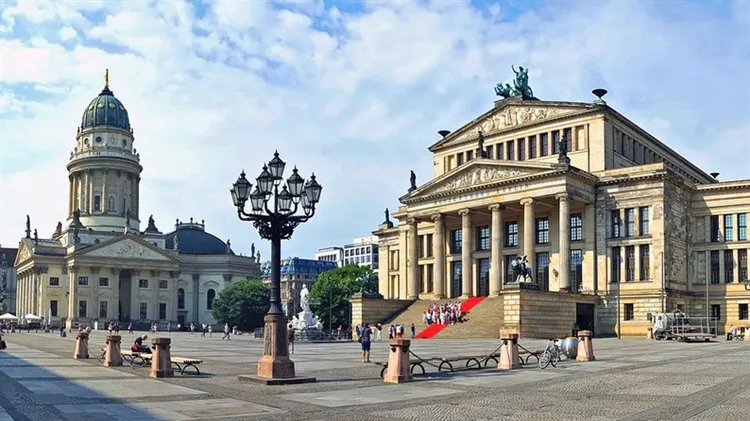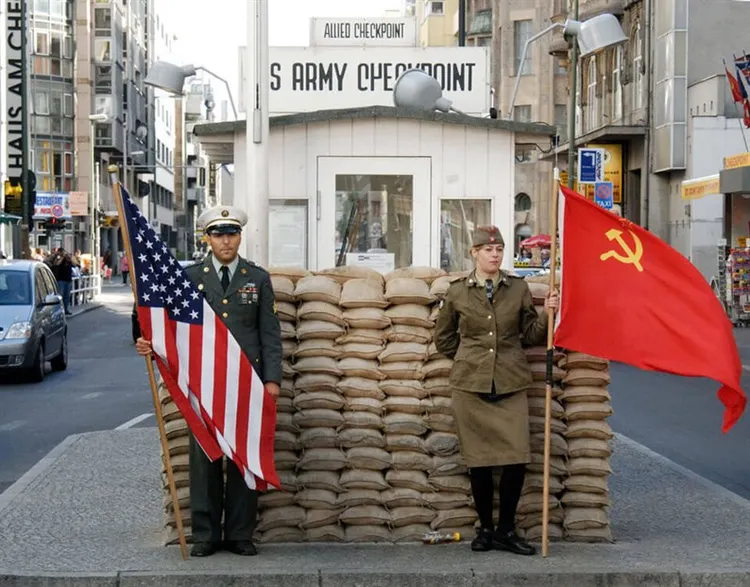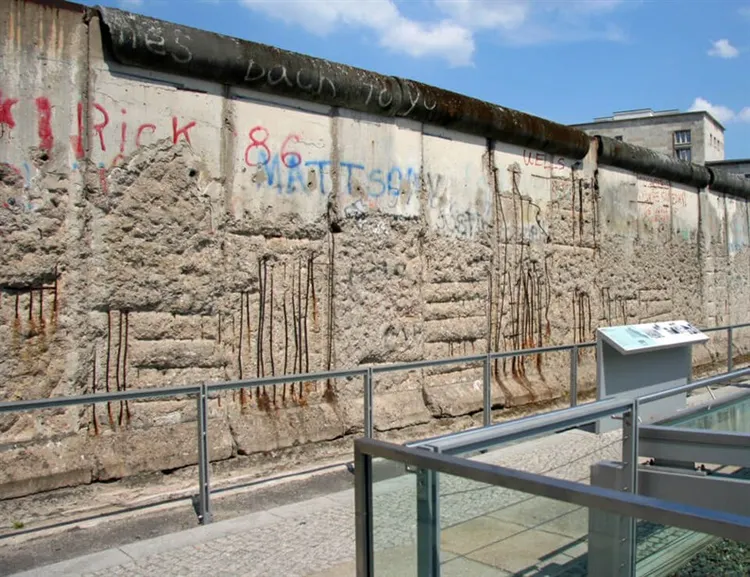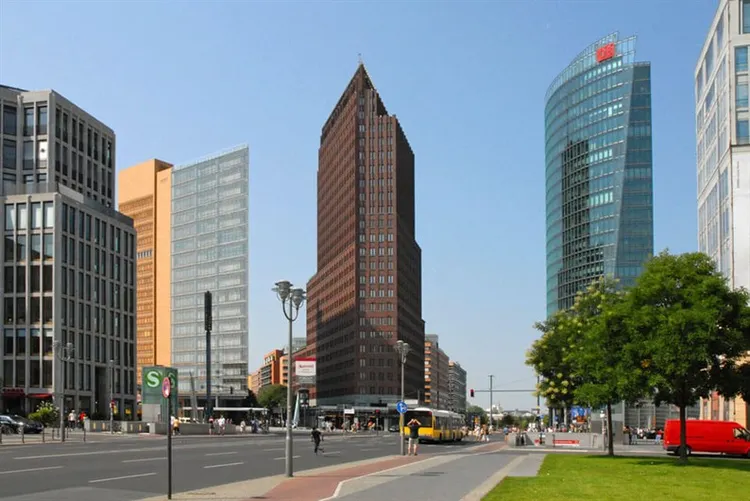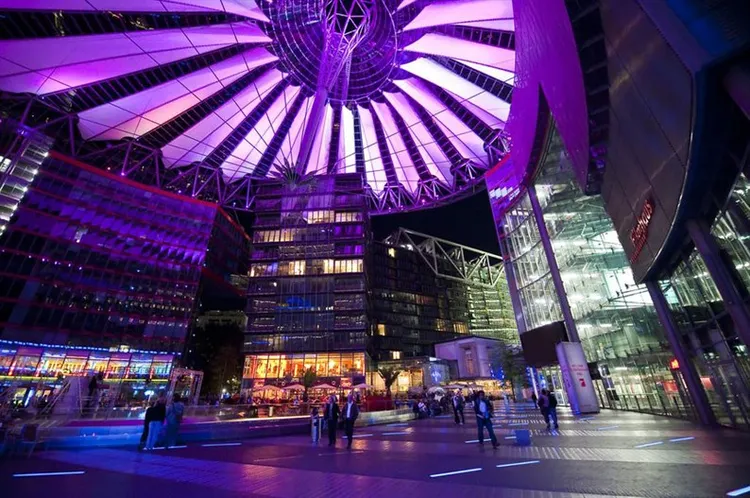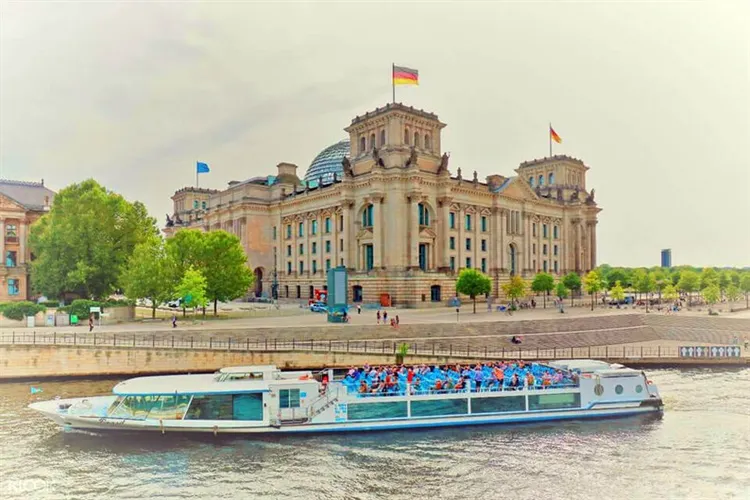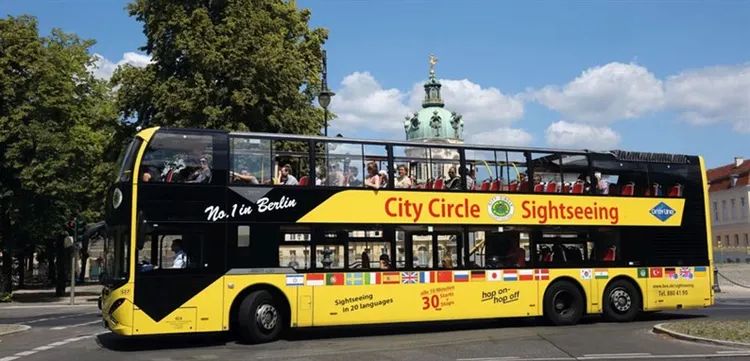What to see in Berlin in 2 days on your own – route, photo, description, map
Berlin is one of the most interesting tourist sites. It embodies the centuries-old history of defeats and victories, the status of the capital of 3 states, the cultural and economic achievements of the German people. To get acquainted with the unique sights of the city, you need to devote a lot of time to this. And if you have only 2 days left, you should plan a route in advance that allows you to see the main cultural and historical sites of the legendary city. This article recommends what to see in Berlin in 2 days on your own.
First day
Today we will walk through the most significant and popular places in the city. Let's get into the atmosphere and take some bright and memorable photos. We recommend choosing comfortable shoes and clothes. The route is very busy.
Alexanderplatz
If you expect to see the attributes of ancient Europe on the central square, then your expectations will not come true. Alexanderplatz, named after the visit of the Russian emperor Alexander I (1805), today is a typically modern square. The vast space impresses with its size and scale of grandiose structures.
Here you will not see medieval palaces and castles. Historical upheavals have changed the face of the once small market square. Of the former buildings, only the Red Town Hall and the Marienkirche Church have survived here – authentic symbols of past eras. The 20th century almost completely changed the historical site, increasing its size by 4 times.
Book a private transfer from the airport to your hotel in Berlin for 3 207 RUB
Today, Alexanderplatz symbolizes the economic power and cultural prosperity of the German capital. The famous skyscrapers of the TV Tower, the Park Inn Hotel, the Alex shopping center – the brainchild of socialist modernism in architecture, impress with their appearance. More recently, an ultra-modern residential building of 39 floors has “grown” here with a luxurious hotel on the 1st floor. Alexanderplatz is a favorite meeting place for Berliners, a solid transport interchange and a popular tourist attraction.
Berlin TV tower
The unique high-rise building, erected back in socialist Germany, has not lost its futuristic symbolism even today. The Berlin TV Tower (height 368 m) still looks like an object of architectural modernism. The grandiose project was carried out by a group of talented architects. Instead of the estimated 30 million marks, 200 million marks were spent, and in October 1969 the building was put into operation.
The result of the collective labor justified the expense – a masterpiece of high-rise construction is still a popular tourist attraction. Interest is not only the appearance and height of the tower. Visitors are excited about the technology of the sliding method of erecting such an extraordinary structure. At a height of 200 meters, there is a huge metal ball with a diameter of 32 meters. It was assembled on the ground from individual plates and installed by a crane attached to the trunk of a high-rise. The tower is crowned with an antenna (height 118 m), assembled from 4-meter conical segments.
Several entrances to the tower let hundreds of tourists pass every day, ascending in swift silent elevators to the observation deck in almost seconds. It is located inside the ball at an altitude of 204 m, from where a charming panorama of the city opens. There is also a wonderful restaurant (on a rotating platform) with national German cuisine.
Church of St. Mary
Among the modern buildings on the square. Alexanderplatz is the “island” of antiquity – the Church of St. Mary. Its Baroque-Gothic appearance – a reminder of the historical past – captivates with its authenticity. Built in the 13th century of bright red brick in the Brandenburg Gothic style, the church has undergone changes in architecture.
After a fire in the 17th century that damaged the tower, it was restored and decorated with baroque elements. And in the 18th century The tower was given a neo-Gothic look. The Church of St. Mary remained the only old building on the square, to which there is a stream of tourists. The temple has become a kind of museum where you can see the true atmosphere of the Middle Ages.
The interior decoration delights with numerous decorations made in various styles. The sculpture “John the Baptist” surrounded by angels, the baroque altar, the ancient fresco “Dance of Death”, the Gothic font make an indelible impression. Everyone is excited and attracted attention by the silver organ, the keys of which were touched by the hands of the genius Bach. It is impossible not to listen to the magnificent singing of the church choir on Sunday services and not be imbued with high spirituality.
Fountain Neptune
Not far from the TV tower is a masterpiece of fountain architecture of the 19th century – the Neptune Fountain. It belongs to the main attractions and serves as a symbol of the revival not only of Berlin, but of the whole of Germany. The fantastic building in the antique style was designed by sculptors Schinkel and Begas as a gift to Kaiser Wilhelm II (1891). It was installed in front of the winter residence of the monarch on the palace square.
Like many architectural monuments of the city, the fountain-monument was significantly damaged during the bombing of 1945. Wilhelm's Palace, destroyed to the ground, was demolished in 1951, and the Neptune Fountain at the same time was sent for storage and subsequent restoration. Unique cast sculptures were restored to their original form, and the monument was installed in a new location – next to Alexanderplatz.
The view of the fountain is impressive in its dimensions. The diameter of the quadrangular pool with rounded edges is 18 m, the height (without the trident) is 10 m. The bottom of the pool and the edging are made of granite. In the center of the fountain bowl, an improvised rock was erected with Neptune, the lord of the seas, seated on a throne-shell, surrounded by children. Around the pedestal are numerous sculptures of marine life. 4 bronze female figures allegorically personify the main rivers of Germany. Near the “Neptune” is always a lot of people.
Red Town Hall
The unusually bright and beautiful building of the Red Town Hall strikes the imagination with its strict and at the same time pompous architecture. In its external appearance, 2 styles were mixed – Renaissance and Neo-Gothic, which gave the building a majestic look. Red unfired brick was the best fit for the implementation of Wesemann's project (1861-69). Like many buildings, the Red Town Hall has been repeatedly restored, supplemented with new elements.
Between the 1st and 2nd floors, the facade was decorated with a frieze “History in stone” (1979) with images illustrating the stages of development of the German capital. Of interest is the mosaic window located above the main entrance of the town hall. A magnificent clock tower crowns the central portal. 300 steps lead to its top, where an observation deck is built. Massive figures of 8 bears are installed along the perimeter of the roof – symbols of the most famous German family of Askani.
Today, almost all official meetings and business meetings are held in the Column and Armorial Halls of the Red Town Hall. Here is the beautifully furnished office of the burgomaster. Tourists can see the grand beauty of the interiors only 2 times a year (January, August), when the Long Night of Museums festival takes place. Red carpets on the steps of the stairs, snow-white columns with golden capitals, luxurious furniture cannot but delight.
Church of St. Nicholas
The oldest church (beginning of the 13th century) adorns the historical quarter of the city with the same name. It was erected near the crossing of the river. Spree with an international trade route and was a three-aisled basilica with a cross. Later it was rebuilt, giving the appearance of a gothic hall church with a richly decorated altar and a tower at the top. Sponsored by the Guild of Berlin Bakers.
In the 19th century during a 2-year reconstruction, the facade of the temple was transformed in the neo-Gothic style, adding 1 more tower symmetrically to the 1st. In 1938, the historical and religious-architectural monument became state property. Church services have since ceased. Part of the church attributes, which have a genuine artistic value, was transferred to the church of St. Mary.
Despite the brutal bombardments of 1945, the powerful walls of the sanctuary withstood, but the church stood in a dilapidated form for a long time. Painstaking restoration work began in 1981 according to authentic drawings and drawings. A new element was added – carillon chimes with 41 bells. Now a branch of the Brndenburg Museum with artifacts from the 13th-14th centuries is organized here. and an organ music concert hall.
Ephraim's Palace
The building of the Ephraim Palace, amazing with the beauty and grace of architecture, is a vivid evidence of the careful, reverent attitude of the German people to the past and its symbols. Built at the end of the 19th century, the palace belonged to a wealthy merchant and banker, the Prussian Jew Ephraim. Taking advantage of the special location of King Frederick II, the banker received permission to build a building in the prestigious district of Mitte.
A true architectural masterpiece, like the Phoenix, arose from devastation in the 80s of the 20th century. The most beautiful 4-storey building, made in the Rococo style, was practically demolished during the construction of the Mülendambrücke bridge in 1936. Fragments of the facade, walls, decorations were taken to West Berlin, where they remained for a long time.
The decision to restore the Ephraim Palace was made 7 years before the celebration of the 750th anniversary of Berlin as part of the restoration work in the historic Nikolaiviertel quarter. A magnificent example of rococo architecture received a second life in its original form, thanks to the efforts of the architect F. Klinger. Today, the palace delights with the sophistication of the gold finish, the bizarre asymmetry of the structures, the majesty of the columns and statues.
Berlin Cathedral
On the museum island of Spreeinsel is the famous Berlin Cathedral – the largest Protestant church in Germany. It took 11 years to build the magnificent church, destined to become the main parish of the Lutherans of Europe. The baroque appearance of the Protestant church, bright and lush, is devoid of traditional asceticism.
Many stucco ornaments, sculptures, columns adorn the facades of the church from the outside. Majestic copper domes overshadow the architectural work of art. Going inside, you feel spatial and spiritual freedom. Here everything is just as bright and beautiful: amazing stained-glass windows, paintings from biblical life, carved patterns of the pulpit.
After the end of the war, the cathedral was reconstructed for many years. As a result, it has decreased in height by 6 m, but still impresses with its irresistible beauty. An observation deck (a favorite place for tourists) is located in the central dome. The organ of the famous master Sauer is installed in the hall. Here is the family tomb of the Hohenzollern dynasty.
Lustgarten park
In front of the Cathedral there is a wonderful Lustgarten park, re-restored in 1946. In the 17th century. on this site was located the palace economy of the Elector of Brandenburg. Later, various public events were held here. Under King Frederick I (1713), a military parade ground with a sandy surface was arranged. The 19th century gave the former parade ground a different look. Under the guidance of the famous architect Schenkel, the building of the Old Museum was erected, a grandiose fountain was built, powered by a steam engine.
It was a real technical breakthrough, as impressive as the fountain itself. But later, a sculpture of Frederick III was installed in its place. Military destruction did not bypass the park, almost destroying everything in it. Only in 1998 did the Lustgarten restoration work begin. Now this beautiful place pleases the townspeople and tourists with its picturesque beauty. Intricate fountains, original landscape paintings, a wonderful garden in the English style enchant and pacify.
German Historical Museum
The Museum of German History was opened in the Reichstag building in honor of the 750th anniversary of Berlin (1987). In the GDR, a similar museum was located in the Zeuhaus, the ancient building of the arsenal of the Prussian kingdom. After the unification of Germany in 1990, 2 museums (1 in the Reichstag and the 2nd in the Zeughaus) were merged into one grandiose institution – a single German Historical Museum.
The oldest building of the arsenal underwent a long reconstruction (1994-2003). Built in the 18th century. in the Baroque style, it was already once restored after the war with Napoleon in the spirit of “Shinkel classicism” (the style of the architect Schinkel).
The internal content of the Zeughaus is also impressive in the number of various exhibits illustrating all stages of development and decline of the state. History from primitive settlements to the present day passes before the eyes of visitors. Temporary exhibitions are organized in a new modern-futuristic glass and steel building.
Old National Gallery
The Temple of Artistic Works of Art – this is how you can call this cultural and educational institution. The old National Gallery was opened in March 1876 on Museum Island. A magnificent building with a majestic entrance and an elegant colonnade, indeed, resembles a temple. The first collection of art exhibits was a collection of 250 paintings donated to the gallery by I. Wagner.
Like all significant objects of the city, the building of the National Gallery was badly damaged by the bombing, left without a roof for 3 years. After the restoration of the roof and cosmetic repairs, the museum was opened to visitors in 1950. The collection of paintings reflects all areas of painting from classicism to modern abstractionism.
After the unification of the country, it was decided to carry out a major reconstruction of all the halls and the facade of the unique building. The renovated Old National Gallery opened in December 2001. Spacious, bright rooms with chic finishes are decorated to a high modern level. The canvases of Manet, Cezanne, Waldmuller, Hasenclever, Dege and other great painters captivate the eye and soul.
Pergamon Museum
One of the most interesting institutions of the Museum Island is named after the ancient city of Pergamon, located in Asia Minor. Reconstruction of Pergamon (129 AD) from the era of the reign of the Roman emperor Hadrian is presented in the Panorama museum exhibition. All exhibits found by archaeologists represent the ancient art of various countries. Here are the Market Gate from Miletus, the Pergamon Altar, the Ishtar Gate from Babylon, fragments of the facade of the Mshatta Palace.
In fact, the Pergamon Museum is a complex of 3 museums: classical antiquities, the Middle East and Islamic art. Now Pergamon is undergoing another reconstruction, but most of the expositions are open to the public. The Gates of Miletus, Ishtar, Babylon, the friezes of Mshatta, etc. are available for inspection. The Pergamon Altar is closed, and the facade is being restored.
Second day
The first day of sightseeing tour is over. It seems that there will be nothing to be surprised at, that the most interesting things have already been seen, admired by churches, a palace and museums. But do not rush to such conclusions – a huge city is still able to amaze the imagination with its squares, unusual and world-famous objects.
Reichstag
In the very heart of Berlin there is a monumental majestic building that survived the victorious procession of triumph and the inglorious defeat of fascism. The architectural and historical monument is a significant symbol not only of Berlin, but of the whole of Germany. For 10 years, a grandiose building was erected, intended for a meeting of the German parliament – the Reichstag, now the Bundestag.
The building received its former purpose only in the 90s of the 20th century after the reunification of the country and Berlin gaining the status of the capital. The monumental beauty of the Reichstag after a major restoration again fascinates and delights tourists who actively visit the German Parliament. They are attracted not only by the majestic appearance of the object, but also by its legendary history.
An attractive factor is the presence of a glass dome at the top, in which there is an observation deck (height 40 m). The dome, installed during the restoration process, is a modernist project by Briton Foster. In the center of the unusual structure rests an impressive cone with 30 rows of mirrors that reflect sunlight into the parliamentary hall. You can learn about many interesting details during the tour.
Brandenburg Gate
One of the most famous sights is the Brandenburg Gate – an example of ancient Greek style architecture. The majestic building was created under Emperor Friedrich Wilhelm (1788-1791) as a connecting element of 2 parts of the city. However, a turn of history made it a symbol of the separation of Berlin and the state (1961), when the Berlin Wall was erected.
The height of the architectural monument, designed by Langhans, is 26 m, the width is 11 m. 6 massive Doric columns support the portico of the gate. It has a classic quadriga with four horses, controlled by the goddess Victoria. During the invasion of Napoleon, the quadriga was taken to Paris as a war trophy (1806) and returned back after 8 years. In honor of this, the architect Schinkel decorated the composition with an iron cross crowned with an eagle.
During the Nazi era, the Brandenburg Gate was the site of marches, parades and processions. After the bombings in 1945, a wonderful monument was restored in 1956, and 5 years later the Berlin Wall was built. She isolated the approaches to the gate for 27 years. The destruction of the wall again made the unique landmark a symbol of the unification of the country.
Gendarmenmarkt square
It is hardly possible to find a more beautiful place than Gendarmenmarket Square, which has a long history. Founded back in the 17th century. as a market Esplanade under Elector Frederick III, it repeatedly changed its purpose and name. When the stables of the French guards and the guard post were located here (1736-73), the square was called the Gendarmenmarket.
By order of Frederick the Great, the stables were demolished and the building of the theater was built, on the site of which the National Theater was later erected. Today everyone sees the third building built on this site – the Concert Hall (1817-1821). The sculptures of Schiller and the 4 Muses (Lyrics, Dramaturgy, History, Philosophy) are reminiscent of the former theatre.
The undoubted architectural decoration of the Gendamenmarket is two domed towers with a circular colonnade. They differ from each other in gilded sculptures crowning the domes. The figure of the Triumphant Virtue is installed on the tower of the German Church, and the Triumphant Religion – on the French Church. In general, the entire architectural ensemble of the square is a magnificent historical and cultural monument.
Checkpoint Charlie
The unique museum, which exists only in Germany, was opened on the site of a checkpoint that regulates communications between West and East Germany, separated in 1961 by the notorious Berlin Wall. Museum expositions demonstrate archival documents, photos, objects, devices, illustrating the 28-year history of confrontation.
The photo shows pictures of watchtowers, bunkers, signaling devices. Documents tell about numerous defectors, of which 1.5 thousand people died. Here, at the Berlin Wall History Mile stand, you can see moments of the exchange of spies and agents. An interesting installation by the artist Til tells about the difficult period in the life of the country.
Films about the destruction of the wall, about the rejoicing and fraternization of the people are shown here. The exhibition “From Gandhi to Walesa” depicts the struggle for human rights around the world without violence and death. Checkpoint Charlie, which has become a symbol of the contradiction between the two political powers, is very popular with tourists.
Berlin Wall Memorial
Another symbol of the historical division of Germany is depicted in the Berlin Wall Memorial. Erected in the summer of 1961, a 163-kilometer concrete wall separated the people, families, friends for 27 years. Over the years, almost 75 thousand people were convicted by the authorities of both countries for trying to cross the wall, more than 1 thousand were shot immediately. When in 1989 the East Germans received permission to cross the border on special visas, they stormed the wall.
In just a few days, nothing remained of the concrete barrier; its fragments were sold to private collectors. A few years later, even Berliners could not determine exactly where the fateful building was located. Noticing the interest shown by tourists in this place, the government decided to restore the section of the wall where they most often tried to illegally move to Germany.
Actively bought from collectors plates with graffiti left by the artists of West Germany. Of these, an 800-meter section of the wall was formed, which became the basis of the Memorial. Out of 300 watchtowers, only 3 remained, but they also expressively complement the picture of the former border. In the gallery you can see many unique historical photographs and paintings, Soviet paraphernalia. A real atmosphere of the recent past is created, the interest in which continues to grow.
Potsdamer Platz
If the Berlin Wall Memorial is the embodiment of the past, then Potsdamer Platz is the personification of the rapidly developing modernity. More recently, this place was a wasteland left after the destruction of the Wall. For 20 years, the cultural and economic center of the German capital was formed on it. Many different trade establishments, art institutions, modern office buildings of the 21st century. adorn the neighborhoods surrounding the square. The well-known k / theaters Kinomax, Kinostar and Arsenal are located here, where the Berlin k / festival is held.
Here, the red carpets are celebrated annually by movie stars. On the square there are modern office buildings of the global concerns Sony and Daimler, occupying 2 blocks. They are separated by the Boulevard of German Film Stars, which is very interesting to walk along. The Sony Center houses the Film Museum with an exhibition dedicated to Marlene Dietrich. Tourists love to visit the Panoramapunkt – the observation deck of the Kohlhoff tower.
Sony Center
One of the most visited objects of Potsdamer Platz is the Sony Center, erected in the Tiergarten quarter. This is a complex of buildings built according to the most modern Japanese technologies. For 2 years (1996-98) 7 structures were built, then for 2 years a huge glass dome was mounted above them. The leadership of such a grandiose project was carried out by the world-famous architect Jan Helmut. 600 million euros were spent on its implementation. The opening of the center, which took place in 2000, was attended by 2.5 thousand well-known politicians, public and cultural figures.
All those present were shocked by the scale and originality of modern buildings. Sony Center is an oval square with 7 glass and steel buildings located around it. The roof-dome, which unites all the buildings with a tent, symbolizes Fuji, sacred to the Japanese. It looks especially irresistible in the evening, illuminated by multi-colored lights that change every 21 seconds. Almost 8 million people visit the complex every year.
Cruise on the Spree and Landwehrkanal
At the end of the 2nd day, a 4-hour cruise along the Spree and the Landwehrkanal will be a pleasant “highlight” of exploring the city. During this time, you will see the city from the other side, admire the bizarre bridges (there are more than 40 of them) over the reservoirs. You will be surprised by the history of ancient crossings and ultra-modern bridge structures. From the boat you will see the views of the German Technical Museum, the Ministry of the Interior, the beauty of Potsdamer Platz with its unusual buildings.
The picturesque panorama that opens before your eyes will delight and decorate your journey. During the cruise, you can use the services of an audio guide in Russian, included in the price of the cruise. You will be offered free drinks and snacks. You will be able to replenish the collection of your photos about the trip, communicate with tourists from other countries.
How to get from the airport to the center
From Tegel Airport you can reach the center by all types of land transport:
Book a private transfer from the airport to your hotel in Berlin for 3 207 RUB
